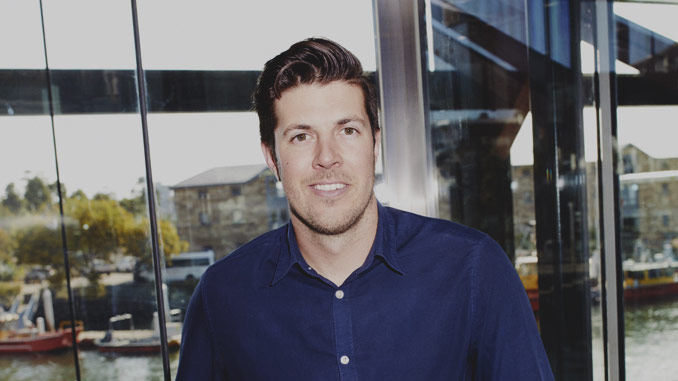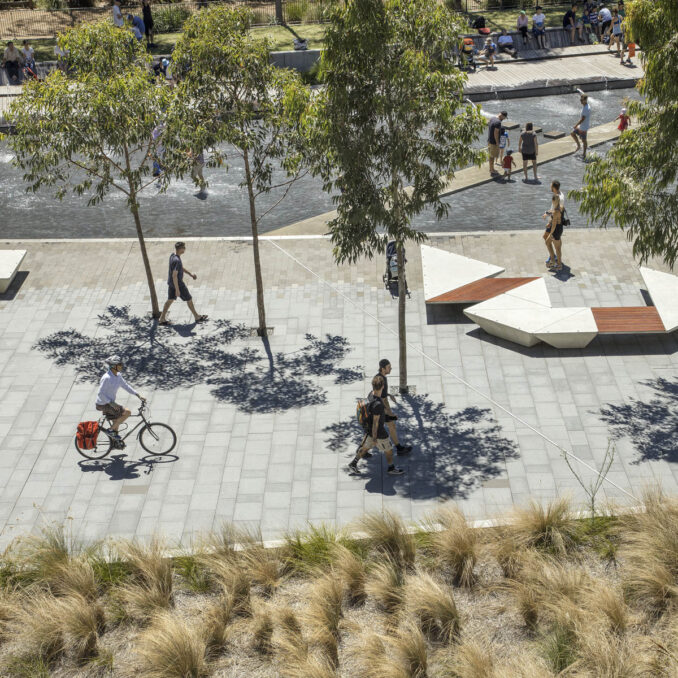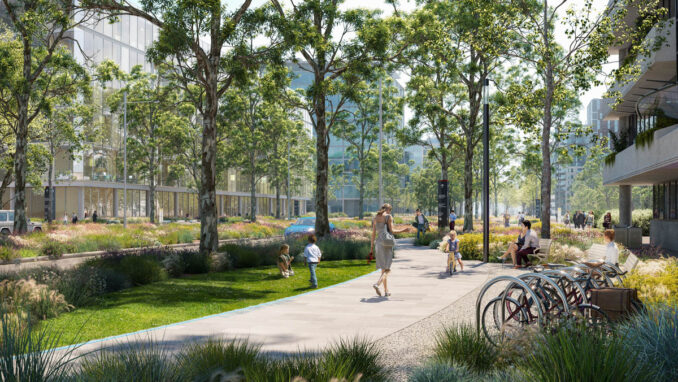
As part of Landscape Architecture Month, we will be profiling some landscape architects from around the world. We had the chance to catch up with Jason Cuffe, Principal, Hassell.
Jason is a Principal at Hassell and leads the Landscape Architecture team in Sydney. He brings a variety of experience on large scale, city-shaping developments right down to small streetscape improvements. His passion for creating places for people is enhanced through his collaborative and enthusiastic approach to design.
Based in the Sydney Studio, Jason has been working for Hassell since 2010, with a key focus on precinct strategies, public domain design and project delivery. Specialising in landscape architecture and built environments, his particular focus is on how the design of the public realm can facilitate new opportunities for social activation within complex urban environments.

WLA | Why did you become a landscape architect?
Since I can remember, I have always been amazed by the beauty and complexity of the Australian landscape. As a child I grew up holidaying in the national parks of the NSW south coast each summer, immersed in the discovery of forests, surf, sun and sand. Hunting and gathering fish, abalone, prawns, oysters and lobster from the local estuaries, rock pools and beaches. This biophilic connection has stayed with me and was the reason I wanted to be a landscape architect. In my early years of study and practice, I was focused on nature-centric areas of practice however, over the years, this has developed into a passion for the social complexities of design; unravelling how design of space can not only green cities but importantly connect communities with each other and the natural systems we all live within.
WLA | How do you start the design process?
I approach the design of each project by first understanding place; research, and mapping of existing vegetation, aspect, geology, hydrology, and broader landscape context through a somewhat McHargian approach. In addition to the natural is revealing the complexities of the cultural fabric and social aspects of the site. This rich mapping and research phase sets the design agenda for my projects and enables a clear place-based vision to be developed. Importantly this process allows the site to be viewed through a number of lenses enabling untold histories of a place to be reimagined and revived. Histories of natural systems, indigenous culture, industrialisation and future trends.
WLA | What is your approach to landscape design?
As a registered landscape architect I believe that each site presents a rich tapestry of complex layers that provide endless opportunities for landscape architects to create memorable design responses. Whether it be to protect enhance or regenerate a site’s ecosystems, landscape architects are stewards of the landscape and tasked with the responsibility of sustainable design. Our medium is ever evolving, with the need to continuously re-evaluate and adjust our design process, thinking and executions. Landscapes must therefore be approached as a temporal medium with a life cycle of their own, from conception to construction, to occupation and finally degradation.

WLA | What is the most rewarding part of being a landscape architect?
The most rewarding part of being a landscape architect is seeing your designs being loved and used by people. It is the smile of the parents moving through a plaza filled with weekend markets, the laughter of children playing in an ephemeral water feature or the celebration of a large crowd watching a civic event from a public amphitheatre. The design of public space appears simple to most, but it is continual conversations with the client, complex detailed solutions above and below ground and the continual advocacy for the importance of public space. Tasks that are rarely understood by the average person but critical to the success of a design.
Landscape architects operate behind the scenes to realise great public spaces and to redefine a cities relationship with its past, community, ecology and natural systems. For me, it is knowing the effort that has been undertaken by a landscape architect to realise that smile, that laughter, that celebration. It is knowing that your design has brought people together; knowing that you are building a network of ecology and habitat; knowing that you are connecting people with the landscape; knowing that you are building a resilient and sustainable future!
It is about designing places people love.
WLA | How do you see the future of landscape architecture?
With increased urban densification, population growth, climate emergencies, and disconnection with nature, landscape architects are in the spotlight and must play a critical role in the way cities and communities move forward towards a more sustainable and resilient future. A future that meaningfully connects with indigenous histories and culture, a future that designs for people and ecology, a future that is defined by and respects the natural systems of a place, a future that is about stewardship rather than degradation. For most landscape architects, these are not new ideas, however, for the general population, they are. More so than ever, landscape architects have the opportunity to be at the forefront of not only design but policy change, the way in which cities develop and the way in which governments respond to global events such as climate change.
The future of landscape architecture is positive however it will be the future generation that will determine whether we have succeeded.
Thanks for Jason for answering our questions – Damian Holmes – Editor, WLA
